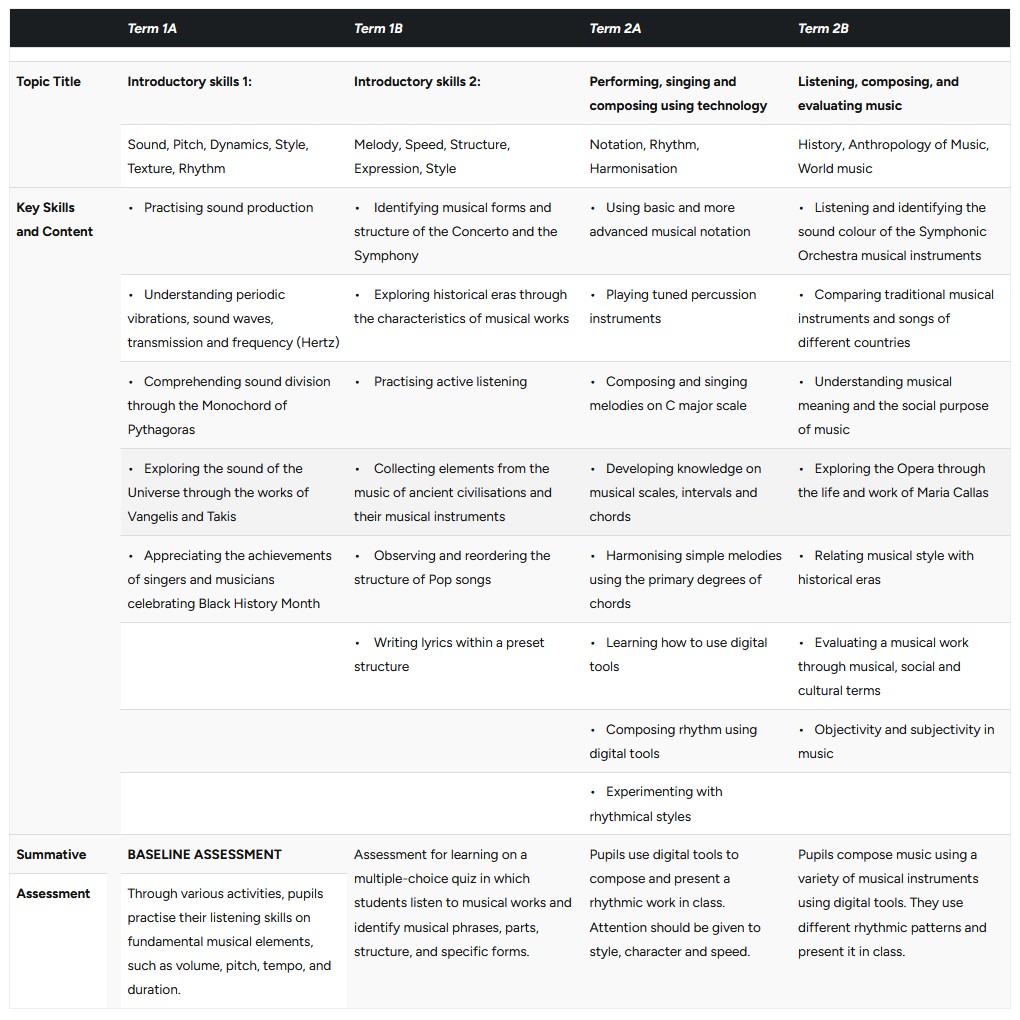| Term 1A | Term 1B | Term 2A | Term 2B | ||
|---|---|---|---|---|---|
| Topic Title | Introductory skills 1: | Introductory skills 2: | Performing, singing and composing using technology | Listening, composing, and evaluating music | |
| Sound, Pitch, Dynamics, Style, Texture, Rhythm | Melody, Speed, Structure, Expression, Style | Notation, Rhythm, Harmonisation | History, Anthropology of Music, World music | ||
| Key Skills and Content | • Practising sound production | • Identifying musical forms and structure of the Concerto and the Symphony | • Using basic and more advanced musical notation | • Listening and identifying the sound colour of the Symphonic Orchestra musical instruments | |
| • Understanding periodic vibrations, sound waves, transmission and frequency (Hertz) | • Exploring historical eras through the characteristics of musical works | • Playing tuned percussion instruments | • Comparing traditional musical instruments and songs of different countries | ||
| • Comprehending sound division through the Monochord of Pythagoras | • Practising active listening | • Composing and singing melodies on C major scale | • Understanding musical meaning and the social purpose of music | ||
| • Exploring the sound of the Universe through the works of Vangelis and Takis | • Collecting elements from the music of ancient civilisations and their musical instruments | • Developing knowledge on musical scales, intervals and chords | • Exploring the Opera through the life and work of Maria Callas | ||
| • Appreciating the achievements of singers and musicians celebrating Black History Month | • Observing and reordering the structure of Pop songs | • Harmonising simple melodies using the primary degrees of chords | • Relating musical style with historical eras | ||
| • Writing lyrics within a preset structure | • Learning how to use digital tools | • Evaluating a musical work through musical, social and cultural terms | |||
| • Composing rhythm using digital tools | • Objectivity and subjectivity in music | ||||
| • Experimenting with rhythmical styles | |||||
| Summative / Assessment | BASELINE ASSESSMENT Through various activities, pupils practice their listening skills on fundamental musical elements, such as volume, pitch, tempo, and duration. | Assessment for learning on a multiple-choice quiz in which students listen to musical works and identify musical phrases, parts, structure, and specific forms. | Pupils use digital tools to compose and present a rhythmic work in class. Attention should be given to style, character and speed. | Pupils compose music using a variety of musical instruments using digital tools. They use different rhythmic patterns and present it in class. |

